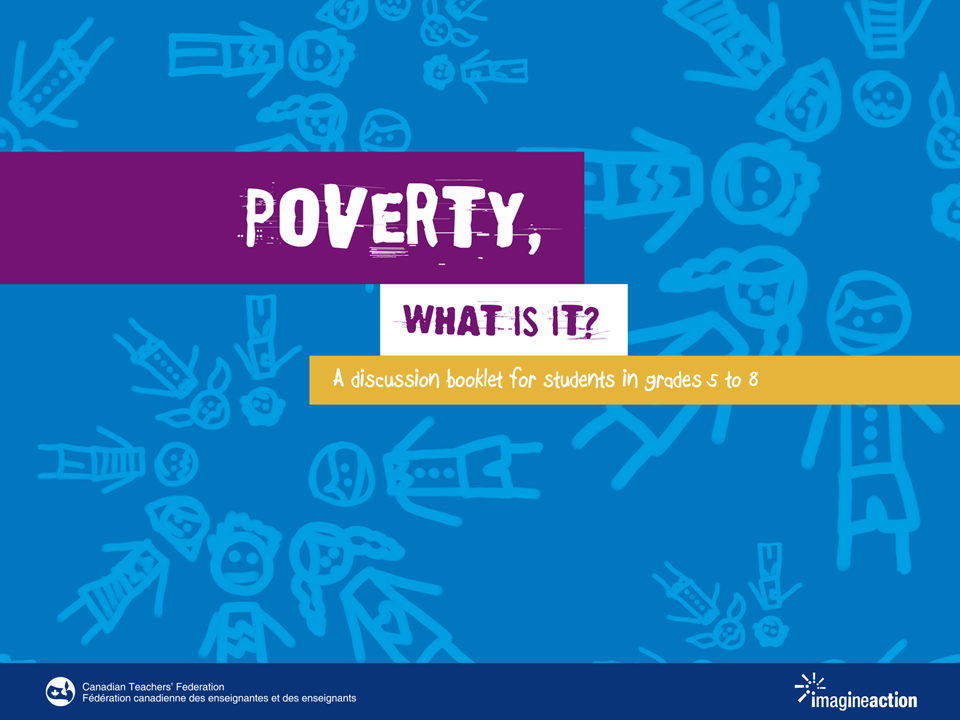Poverty, what is it?

Poverty, what is it? is a discussion booklet for students in Grades 5 to 8, which includes a selection of statements, stories and drawings received from over 200 Grades 5 to 8 students from Manitoba, Ontario, Québec and New Brunswick. The conception, development and production of this booklet represent the collaborative work of the members of the Canadian Teachers’ Federation’s Advisory Committee on Diversity and Human Rights of 2013-2014.
We thank every student and teacher who participated in this important discussion and hope that this booklet will be a valuable resource for teachers in their work.
“This project was a great opportunity for students and teachers to challenge their biases and assumptions about the face of poverty in Canada and to reshape the discourse on its impact on children from aboriginal, racialized, and disabled communities.” – Karen Brown
“This will be a fundamental and indispensable resource for teachers and students. Many students have a stereotypical view of poverty, its causes and who it can affect. Many do not realize that a family’s financial situation can change overnight from one of comfort and security to one of poverty. The sudden loss of employment, divorce or the death of a family member can dramatically change their own situation in an instant.” – Ray Desautels
“The very first thing I learned is that my students had very little understanding of poverty or its impact. Even those of my students who are living in conditions of poverty do not necessarily see themselves as being “poor.” In general, they seem to be fully aware of their families’ financial situation, but they perceive money - or the lack of it - as something that is managed and needs are prioritized; it’s a matter-of-fact way of life that is accepted without judgment or labels.” – Gail Klinck
“We are in a rural community where many families rely on seasonal lobster fishing as their mainstay. As well, there are no large cities nearby so exposure to panhandling etc. is non-existent. However, interestingly some of our families would be considered working poor by others but not by themselves. Strong extended family and community supports exist for families.” – Heather Smith
Help build a community of empathetic youth by better understanding poverty in your community. Challenge your students to come up with a social action project and access a $300 subsidy to offset awareness building project expenses.
Lesson plans have been developed to support the use of this discussion booklet in the classroom. Teachers can access the lesson plans on the CTF Imagineaction program, under the Teacher Resources tab. Teachers must be logged in to Imagineaction to access the resources.
For additional information, communicate with [email protected].
To obtain printed copies at $3.00 each, please visit CTF Publications Catalogue.